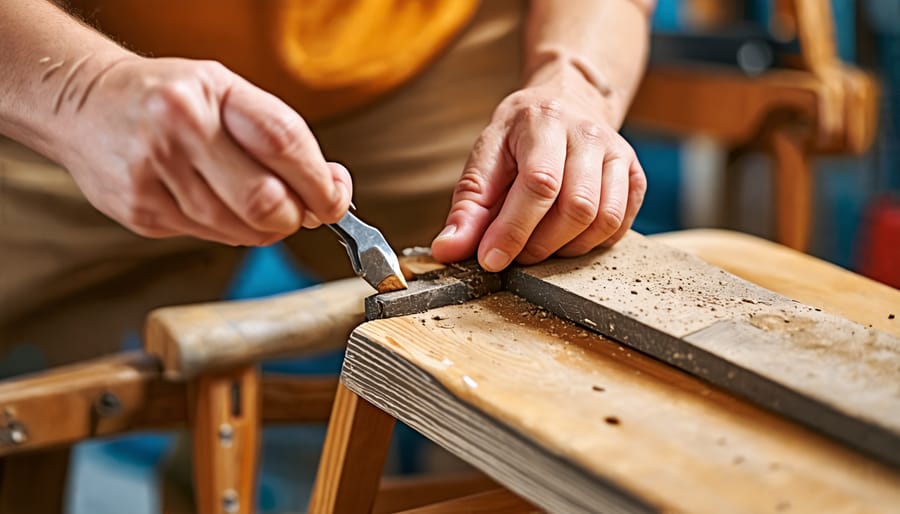Have you ever wondered how you can turn your love for wooden furniture into a thriving business? If you’re someone with a passion for breathing new life into old, worn-out pieces, becoming a wooden furniture repair specialist might just be your calling. Let’s walk through the potential this niche business holds and how you can make the most out of it.
Understanding the Wooden Furniture Repair Business

The Appeal of Wooden Furniture
Wooden furniture has a timeless appeal, gracing homes across the world with its elegance and durability. It exudes a warmth that other materials often fail to match, becoming more of an heirloom over time, carrying with it stories and memories. This sentimental value, combined with its enduring aesthetic, explains why many are willing to invest in quality repairs rather than replace damaged pieces.
Why Wooden Furniture Needs Repair
Despite its sturdiness, wooden furniture isn’t immune to the passage of time. Scratches, dents, watermarks, and loose joints are common ailments that can affect its appearance and functionality. The environmental impact of discarding furniture and the increasing consciousness about sustainability have made people more inclined to repair rather than discard. This trend spells opportunity for repair specialists who can preserve and rejuvenate these beloved items.
Starting Your Wooden Furniture Repair Business
Skills You’ll Need
Before launching into this business, there are certain skills you’ll need to hone. Craftsmanship is at the heart of furniture repair. You should have a good understanding of woodworking techniques, be adept with various tools, and possess a keen eye for detail. Sometimes, knowing when to repair a joint or when to refinish a piece can make all the difference.
Investing in the Right Tools
You won’t get far without the right tools. Essential items include sanding tools, chisels, clamps, wood glue, varnish, and possibly some power tools for more extensive repairs. This initial investment is crucial to ensure you can handle a variety of repair needs efficiently and effectively.
Setting Up Your Workspace
Your workshop is where the magic happens, so setting it up correctly is vital. You need adequate space for your tools and materials and enough room to comfortably handle the furniture you will be working on. Good lighting is essential for detailed work, while proper ventilation will help keep your workspace healthy and comfortable.
Attracting and Retaining Customers
Identifying Your Target Market
Understanding who your customers are is key to your success. Typically, your target market will include individuals who prefer sustainable solutions, antique furniture owners who value restoration, and those looking to preserve the sentimental value of their furniture.
Building Relationships
Building trust with your customers is crucial. Delivering quality work consistently and providing excellent service can turn satisfied customers into repeat clients and potentially even brand ambassadors. Encourage reviews and testimonials to help spread word-of-mouth referrals, which are invaluable in this line of work.
Pricing Your Services
Setting the right price can be tricky. You need to ensure that it covers your costs and reflects the value of your craftsmanship while remaining affordable for your customers. A good way to do this is by researching the local market rates and assessing the complexity and size of each project.
Marketing Your Business
Creating an Online Presence
In today’s digital age, an online presence is non-negotiable. A well-designed website showcasing your services, before-and-after photos of your work, and customer testimonials can significantly enhance your credibility. Don’t forget to optimize your website for SEO to ensure potential customers can find you easily.
Leveraging Social Media
Platforms like Instagram and Facebook are great places to share your work and engage with your audience. You can share tips on furniture care, highlight ongoing projects, or post testimonials. Consistent engagement through social media can substantially increase your visibility and reach.
Partnering with Local Businesses
Creating partnerships with local businesses such as antique shops or interior designers can provide mutual benefits. They can refer clients in need of repair work to you, while you can recommend their services to your customers.
Enhancing Your Skills and Services
Regularly Updating Your Skills
The world of furniture design and repair is ever-evolving, and keeping your skills updated is important for sustaining your competitive edge. Consider attending workshops, courses, or seminars to learn new techniques and technologies.
Offering Additional Services
Expanding your range of services can attract more customers and further grow your business. Consider offering furniture restoration, custom finishing, or even creating bespoke pieces. This can set you apart from competitors and provide additional revenue streams.
Sustainable Practices
Making your business eco-friendly can attract a growing number of environmentally conscious consumers. Use sustainable or reclaimed wood, eco-friendly finishes, and processes that minimize waste. Communicating these practices to your customers can serve as a unique selling point for your business.
Challenges to Anticipate

Handling Difficult Repairs
Not all furniture repairs will be straightforward. Some items may have extensive damage or require techniques you aren’t familiar with. Broaden your skills and don’t hesitate to consult with or even partner with other specialists if necessary.
Managing Inconsistent Income
Like many small businesses, the furniture repair business can have its lean periods. It’s essential to manage your finances wisely and consider diversifying your services to keep income stable.
Navigating Competition
While competition can be fierce, it can also inspire you to improve your services. Stay informed about what’s happening in the industry, adapt to changing trends, and continuously enhance the quality of your work to succeed.
Conclusion: Thriving as a Wooden Furniture Repair Specialist
Embracing the world of wooden furniture repair not only holds potential for financial gain but also offers personal fulfillment as you preserve pieces of history and cherish memories for your clients. By honing your craft, connecting with your community, and continuously learning, you can turn your passion into a successful business. The journey might have its challenges, but the rewards, both monetary and personal, make it a worthy pursuit. Ready to bring old furniture back to life and potentially transform your passion into a thriving business? The tools are in your hands—now it’s time to get started.

